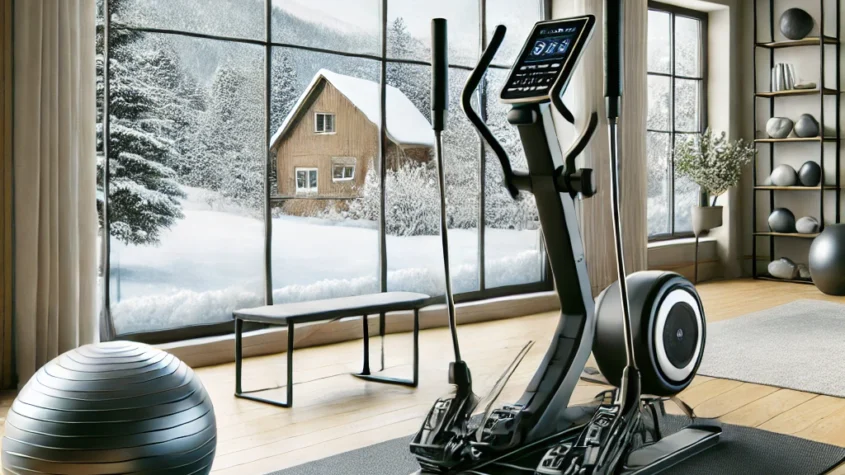
Bender balls are a popular fitness tool designed to enhance core strength and stability. Many enthusiasts claim that incorporating these small, weighted balls into workouts can lead to improved muscle tone and better overall fitness outcomes. They are particularly effective for engaging the abdominal muscles and can be easily added to various exercises for an extra challenge.
Fitness experts appreciate bender balls for their versatility and ease of use. Whether in group classes or personal routines, they allow for a wide range of movements that target different muscle groups. Users have found that these balls can seamlessly fit into dynamic workouts, enhancing both aerobic and strength training exercises.
As more individuals look for effective ways to elevate their fitness regimes, bender balls present a practical solution. They not only add variety to workouts but also encourage better form and alignment, which can lead to more effective training sessions. This makes bender balls an attractive option for anyone seeking to boost their workout efficiency and results.
Fundamentals of Bender Balls
Bender Balls feature a unique design and versatile usage, making them an effective tool for fitness and rehabilitation. Understanding their construction and applications is essential for maximizing their benefits.
Design and Material
Bender Balls are typically made from durable, high-quality materials designed to withstand rigorous use. The surface of the ball is often textured to enhance grip, providing stability during various exercises.
These balls generally come in different sizes, allowing users to select one that best fits their body type and workout needs. The design incorporates an air-filled interior, which helps maintain the ball’s shape while offering a soft landing for movements involving impact.
The lightweight nature of Bender Balls allows for easy transport, making them suitable for home use or on-the-go workouts.
Bender Ball Versatile Usage
Bender Balls can be utilized in a wide array of exercises across different fitness levels. Their primary function is to enhance core strength through stabilization exercises.
They often serve as a tool for both cardio and strength training. Users can perform exercises such as squats, lunges, and reaches, which aid in engaging multiple muscle groups simultaneously.
Additionally, Bender Balls are helpful for physical therapy, assisting individuals in regaining strength and flexibility post-injury. Their versatility makes them suitable for personal trainers and group fitness classes, promoting functional movement and balance.
Training and Exercises
Bender balls offer a variety of training and exercise options that enhance core strength, improve flexibility, and support injury prevention. Each workout utilizes the ball’s unique design to aid effective movement and muscle engagement.
Core Strengthening Workouts
Core strengthening with a Bender ball focuses on stability and controlled movements. Exercises such as planks, crunches, and Russian twists can be performed with the ball to engage the entire core effectively.
- Plank with Bender Ball: Place forearms on the ball and extend legs. Hold the position for 30-60 seconds, maintaining a straight line from head to heels.
- Bender Ball Crunch: Lie back on the ball with feet flat on the floor. Perform crunches by raising the torso while keeping tension in the core.
- Russian Twist: Sit on the floor, lean slightly back, and hold the ball. Rotate the torso to one side, then the other, engaging the obliques.
This variety of movements targets the transverse and rectus abdominis, enhancing overall strength.
Flexibility and Stretching Routines
Bender balls can enhance flexibility through active stretching routines. Incorporating the ball into stretching exercises increases the range of motion and aids in muscle relaxation.
- Back Stretch: Sit on the floor with the ball behind the back. Slowly lean back over the ball, extending arms overhead to open up the chest and spine.
- Hip Flexor Stretch: Place one knee on the ground and the other foot flat, with the foot on the Bender ball. Push the hips forward gently, feeling a stretch in the hip flexors.
- Shoulder Stretch: Stand upright and hold the ball above the head with both hands. Lean to one side, then the other, stretching the shoulders and side body.
These routines promote better posture and less muscle tension, contributing to improved overall mobility.
Injury Prevention and Rehabilitation
Using Bender balls can play a crucial role in injury prevention and rehabilitation exercises. The ball’s instability helps develop stabilizer muscles, which support joints.
- Balance Exercises: Stand on one leg while holding the ball with both hands. This challenges stability, engaging ankle and hip stabilizers.
- Rehabilitation for Lower Back: Lie supine on the ball with feet on the ground. Perform gentle lifts of the pelvis while engaging the core, aiding in lower back recovery.
- Ankle Strengthening: Sit and place the ball between the knees. Squeeze and hold to improve inner thigh strength, which supports knee stability.
By focusing on these targeted exercises, individuals can reduce the risk of injury and aid in recovery.
Zudio Online Shopping: Discover Affordable Fashion Trends Online
Zudio online shopping offers a unique platform for budget-conscious shoppers seeking styli…









